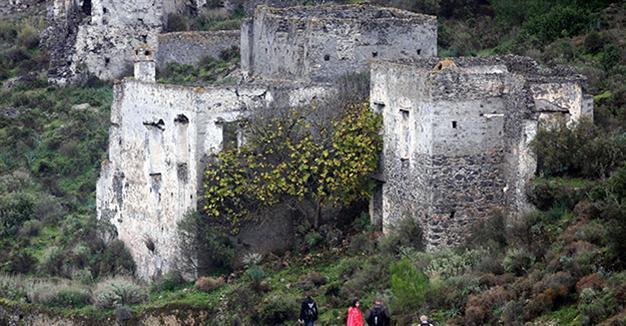Muğla's historic structures threatened by trees, plants
MUĞLA – Anadolu Agency

AA Photos
A number of architectural structures in the 3,000-year-old ancient site of Kayaköy in the western province of Muğla are being threatened by local flora, as trees and plant life have damaged the walls of the old buildings.Eight kilometers away from the province’s Fethiye district, Kayaköy, or Karmylassos as it was known in the ancient era, is home to a number of old structures. During the Ottoman era, the city was populated by Greeks, who left after the 1923 population exchange, abandoning the city. Many of the newer, wooden structures in the city have since decayed, and Kayaköy became known as a “ghost city.”
In 1988, a project was made in collaboration with the Turkish Architects Chamber and the Turkish-Greek Friendship Association for Kayaköy to become a “Friendship and Peace Village.” Kayaköy has since become a first-degree archaeological site.

An open air museum
Recently, it was reported that trees growing in and around the houses in Kayaköy had been damaging its ancient walls, and even caused some to collapse.
Fethiye Architects Chamber Representation Executive Board member Hilal Polat said the biggest problem in Kayaköy was the destruction of the environment. She said the growth of a number of plants, particularly fig trees, has had a negative impact on the structures.
“Trees have burst through the walls of the structures. First of all, the environment should be taken under control here. Then some buildings should be restored and become an open air museum. Some buildings should not be touched because we need to preserve history,” she said, adding, “We don’t want Kayaköy to be a touristic hotel. Infrastructure works, electricity and water installations damage the natural structure.”
Fethiye Architects Chamber Representation Executive Board President Gökhan Güngör said they hoped to restore some parts of Kayaköy while leaving others in their original state and turn the site into an open air museum.
He said some buildings at the site could bring a “cultural richness” to the region. “There were many Greeks who had to leave Kayaköy during the population exchange. Some part of the buildings should not be touched in memory of these people,” he said.
















